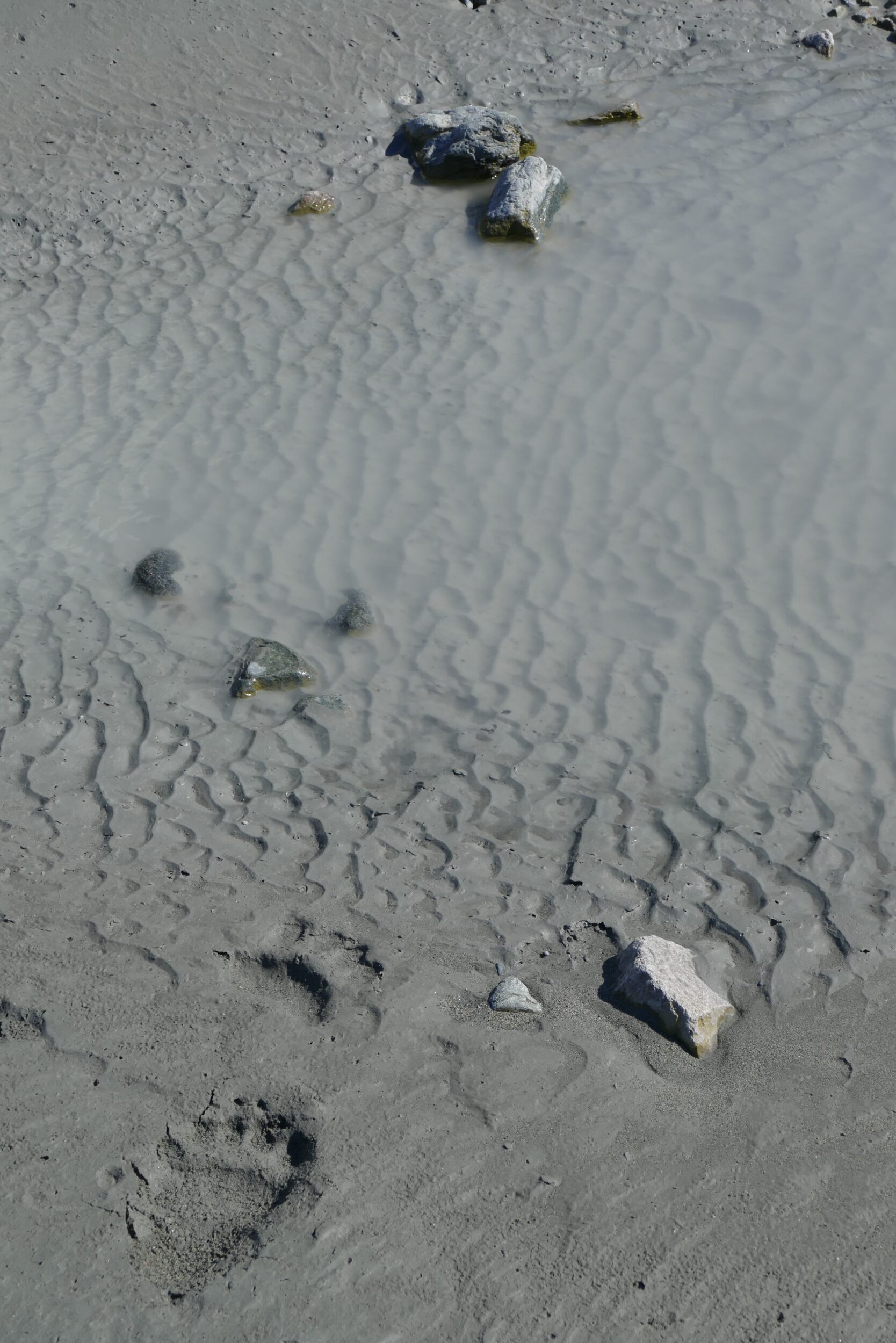This post’s actual footprints come from bears in Alaska, birds on the Indian subcontinent and continental Australia, a Tasmanian wombat, and humans in an African desert and Australian suburbia.
The musical bonus is courtesy of one of the greatest jazz musicians – equally so as composer, virtuoso instrumentalist and inspired improviser.
There’s also a metaphorical footnote which involves New Zealand’s largest farm…
The featured image’s bearprints come from the intertidal zone between a retreating glacier’s “snout” and the waters of southeastern Alaska’s Glacier Bay.
We did not see the relevant bear, but I assume our feet would have arrived not very long after his or hers; the next incoming tide would likely prove an effective eraser.
The next photos were taken three days later, in another part of Glacier Bay.
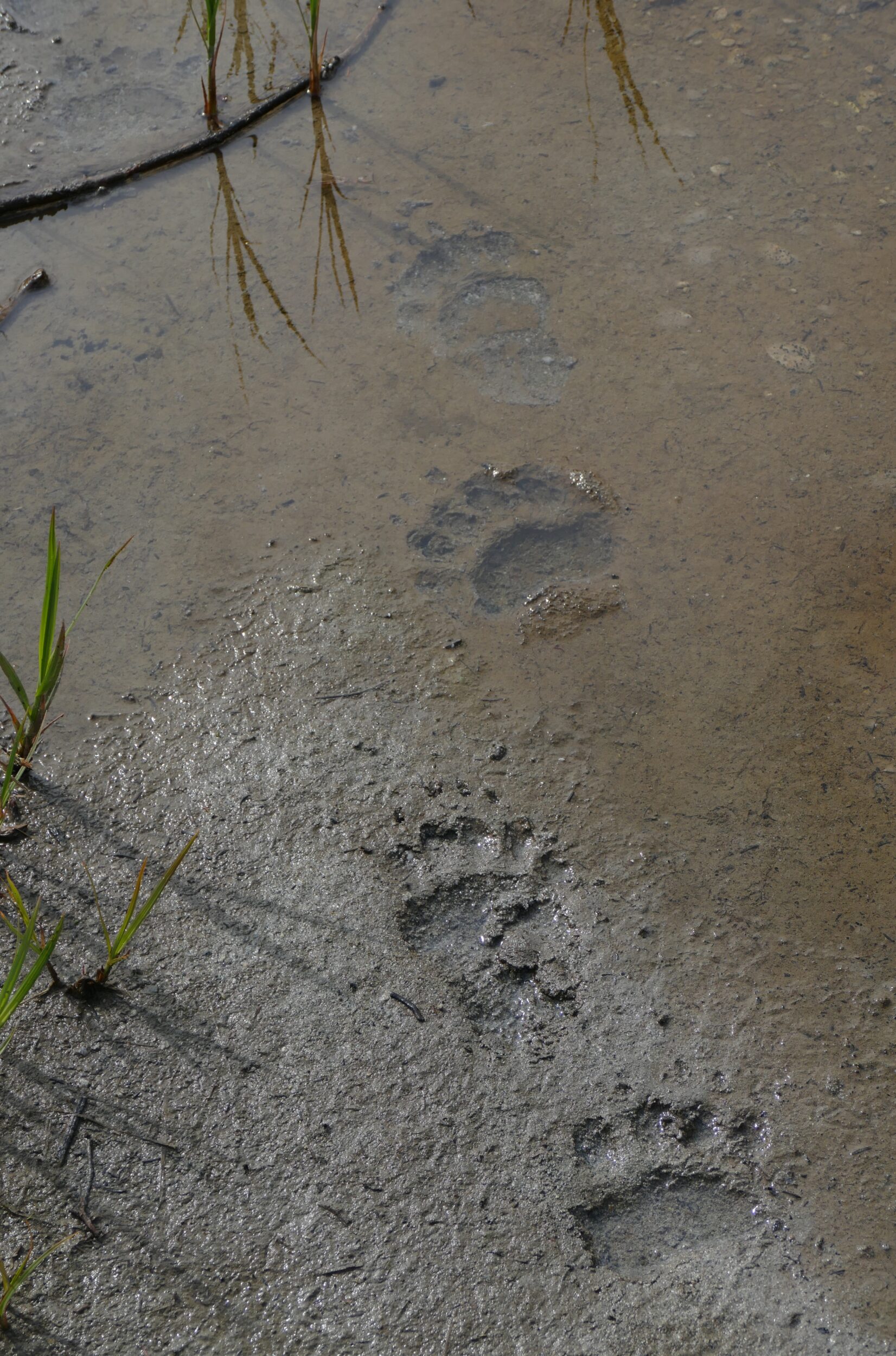
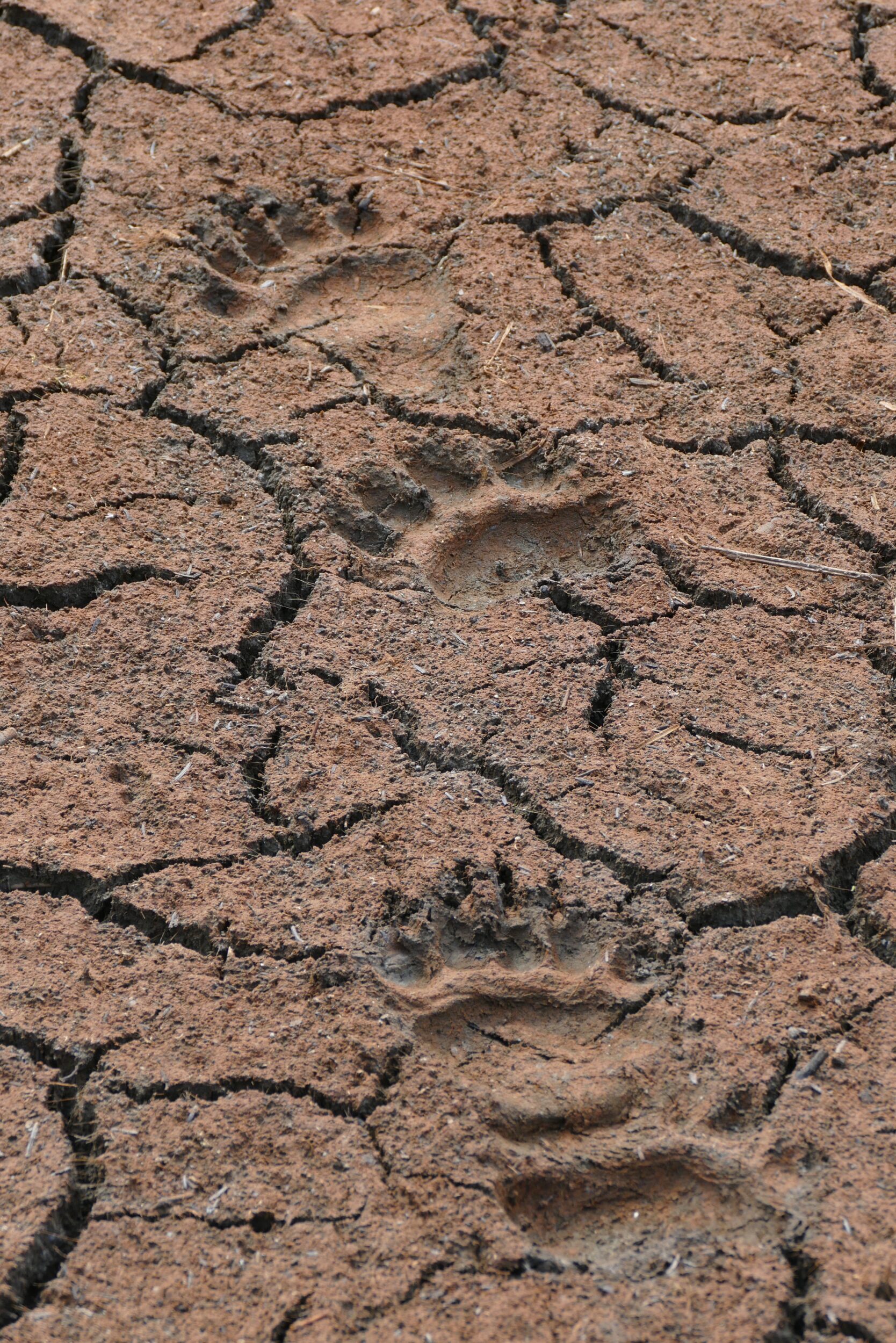
Fresh footprints are only readily visible in soft, damp ground or in sand; they are usually ephemeral.
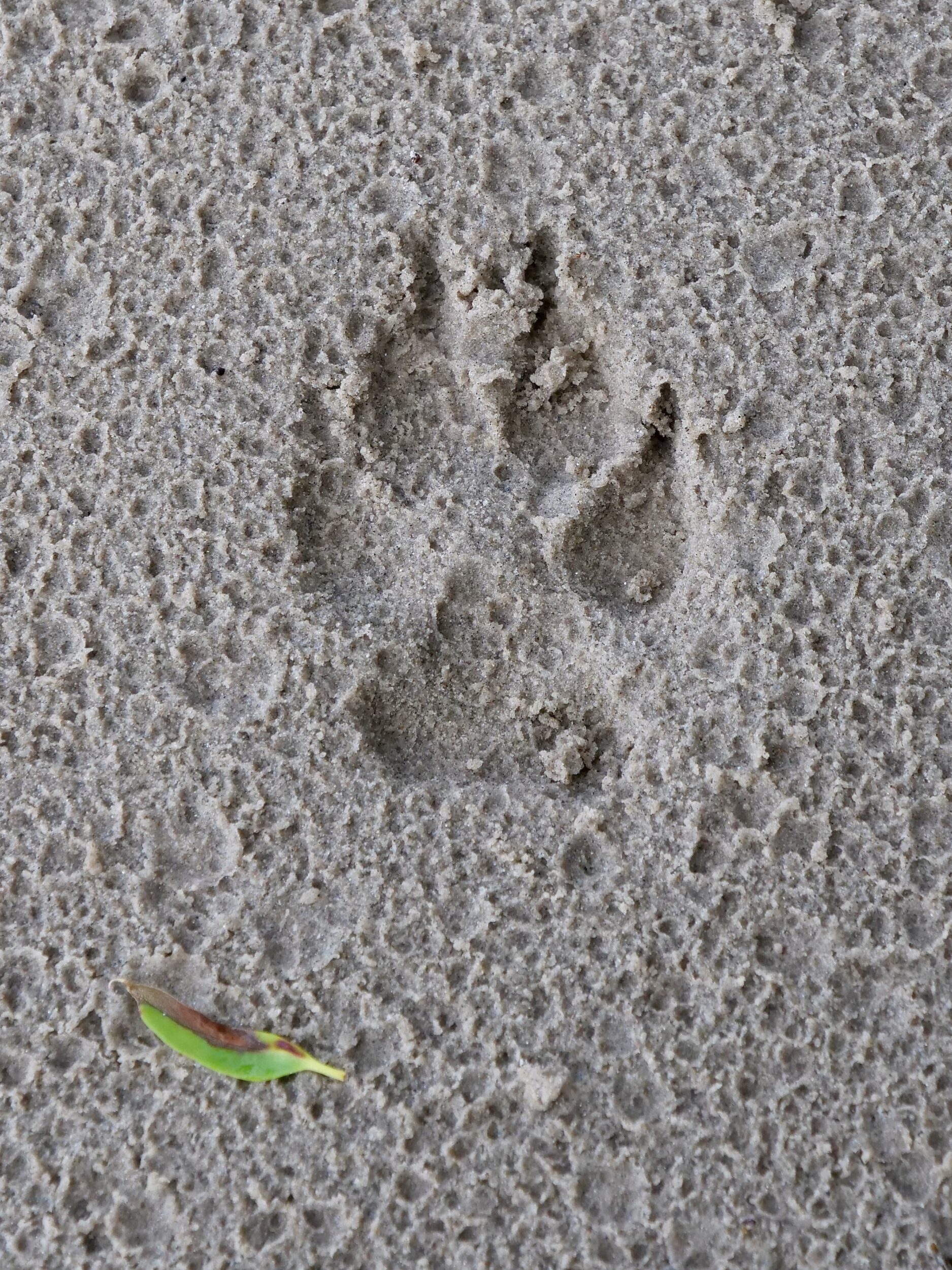
Even if the beach-walking wombat had stayed on the “dry” side of the high tide line, rain and/or wind – both abundant, locally – would soon erase any trace of his/her presence.
The sand’s texture in the above photo is courtesy of rain that was then falling, gently.
Whenever the next tide rolled in on the southern shore of Perth’s Swan River – which is a large estuary – neither footprints nor their maker would remain at this spot, just below an elevated footpath at Point Dundas.
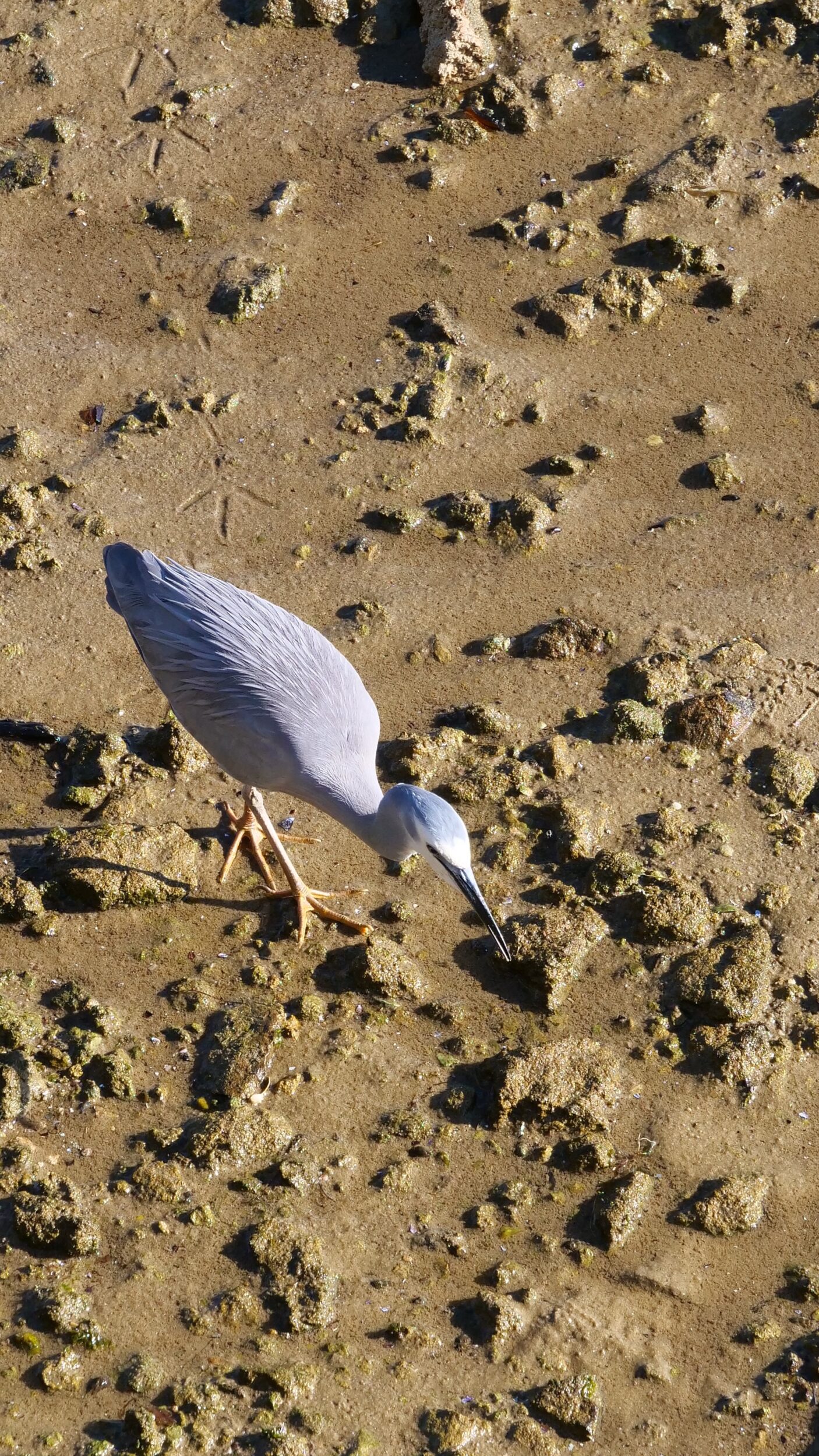
Late afternoon, lapwings’ footprints were very evident at Apollo Bay, just in front of the (really good) “Big 4” holiday park; next morning, a human newcomer would likely have had no reason to know that this bird had ever been there.
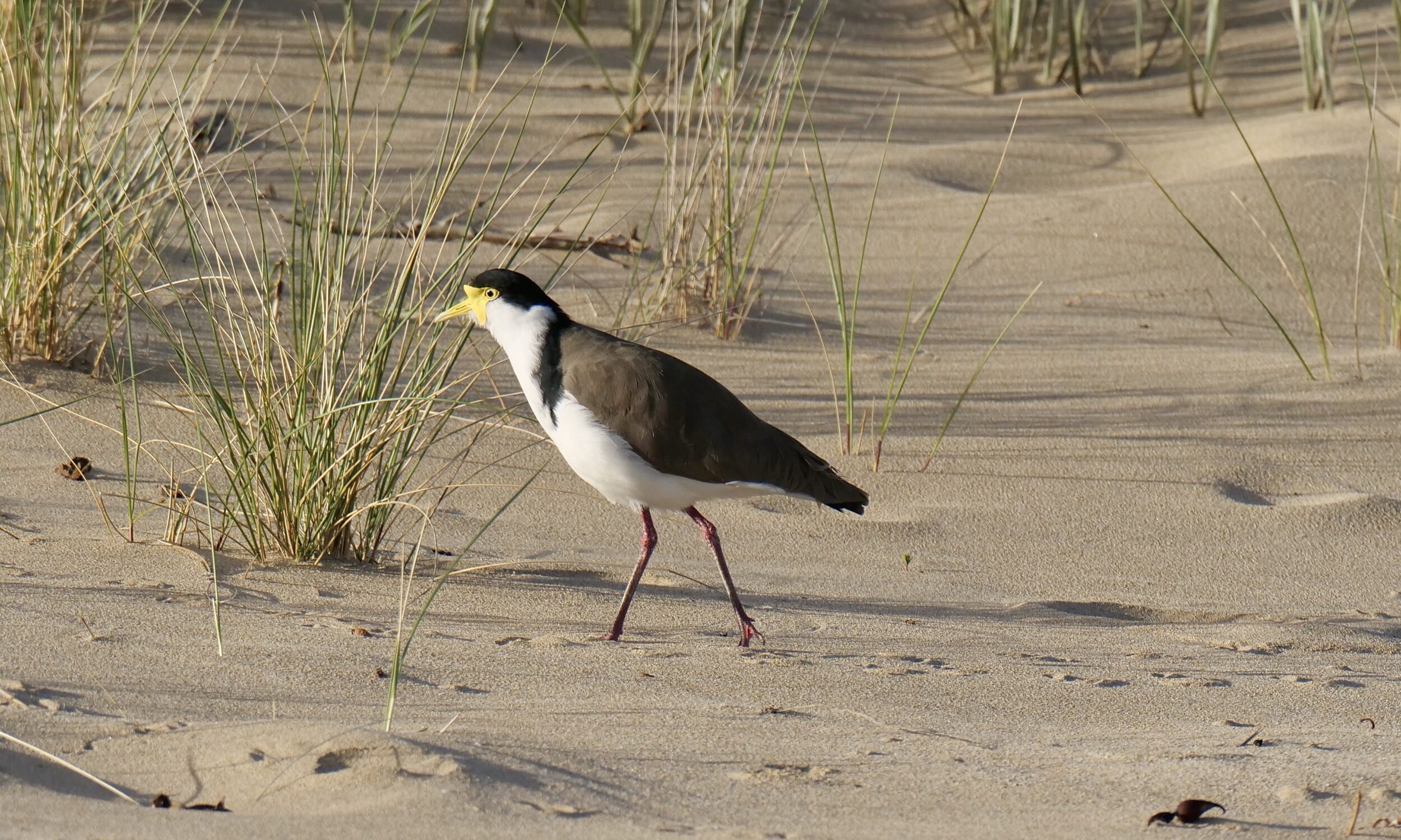
The next substantial wind – and/or the next tour group’s feet – would remove all evidence of the many tiny birds who’d been so busy that morning.
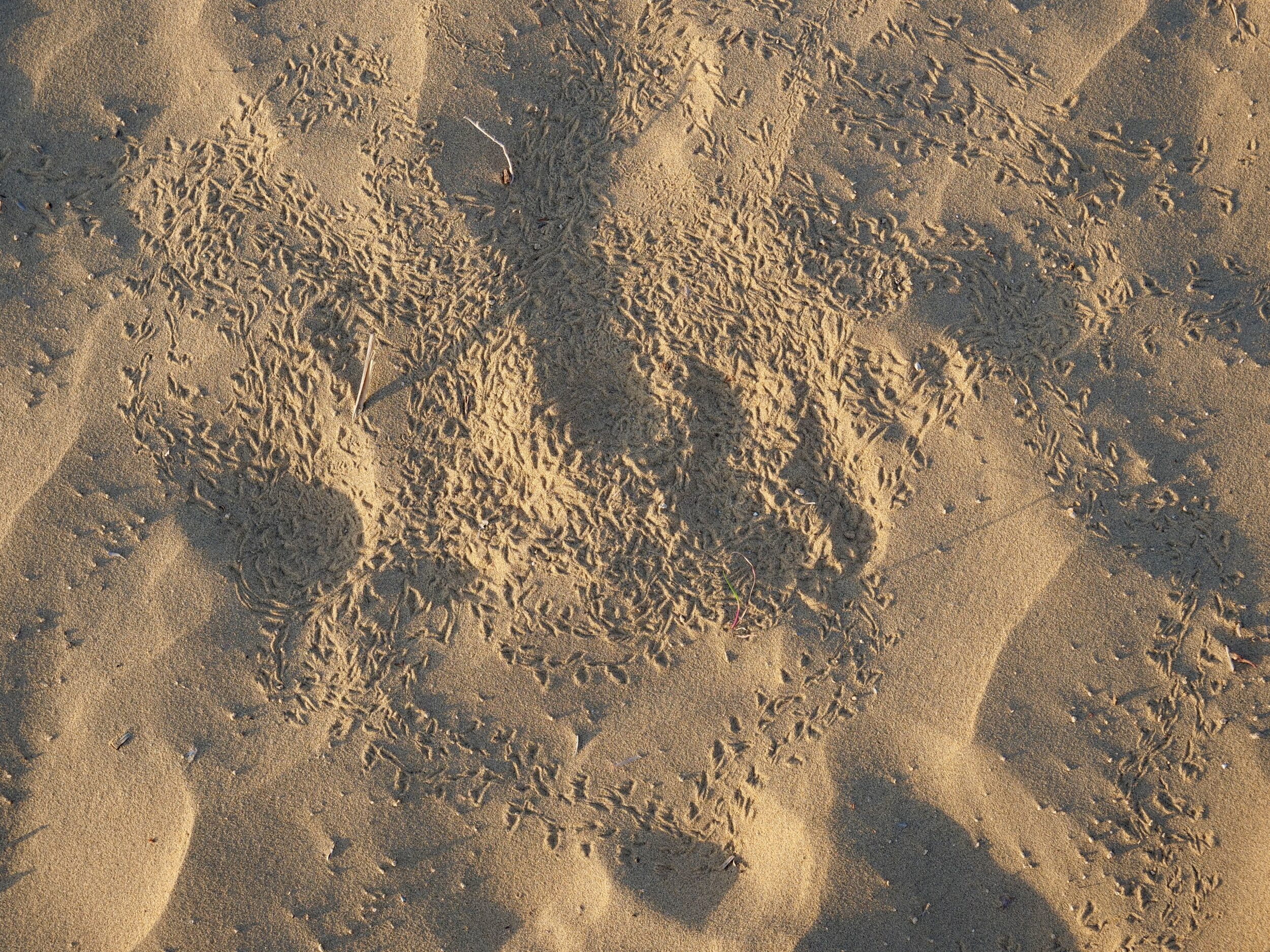
Micro-deserts often suddenly appear in inner-suburban Perth; an old house may have stood for several human generations, only to be “gone tomorrow”, along with every accompanying tree, shrub and flower.
Sometimes, years go by before the new McMansion or other site-hogging, multi-storey monstrosity is erected; meanwhile, various species use the temporary shortcut from one street to the next.
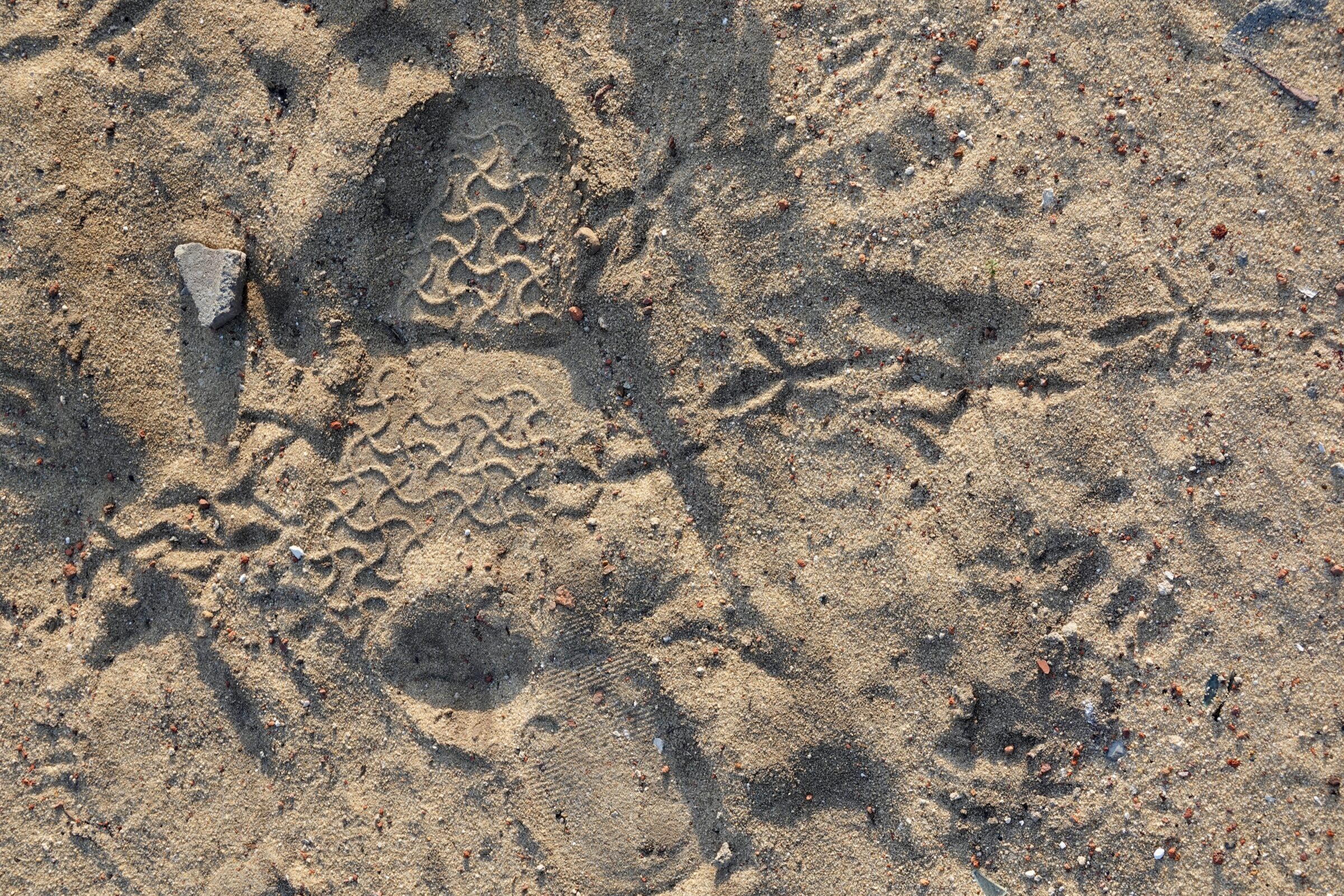
In the world’s oldest desert, footprints can be an arresting presence…or absence.
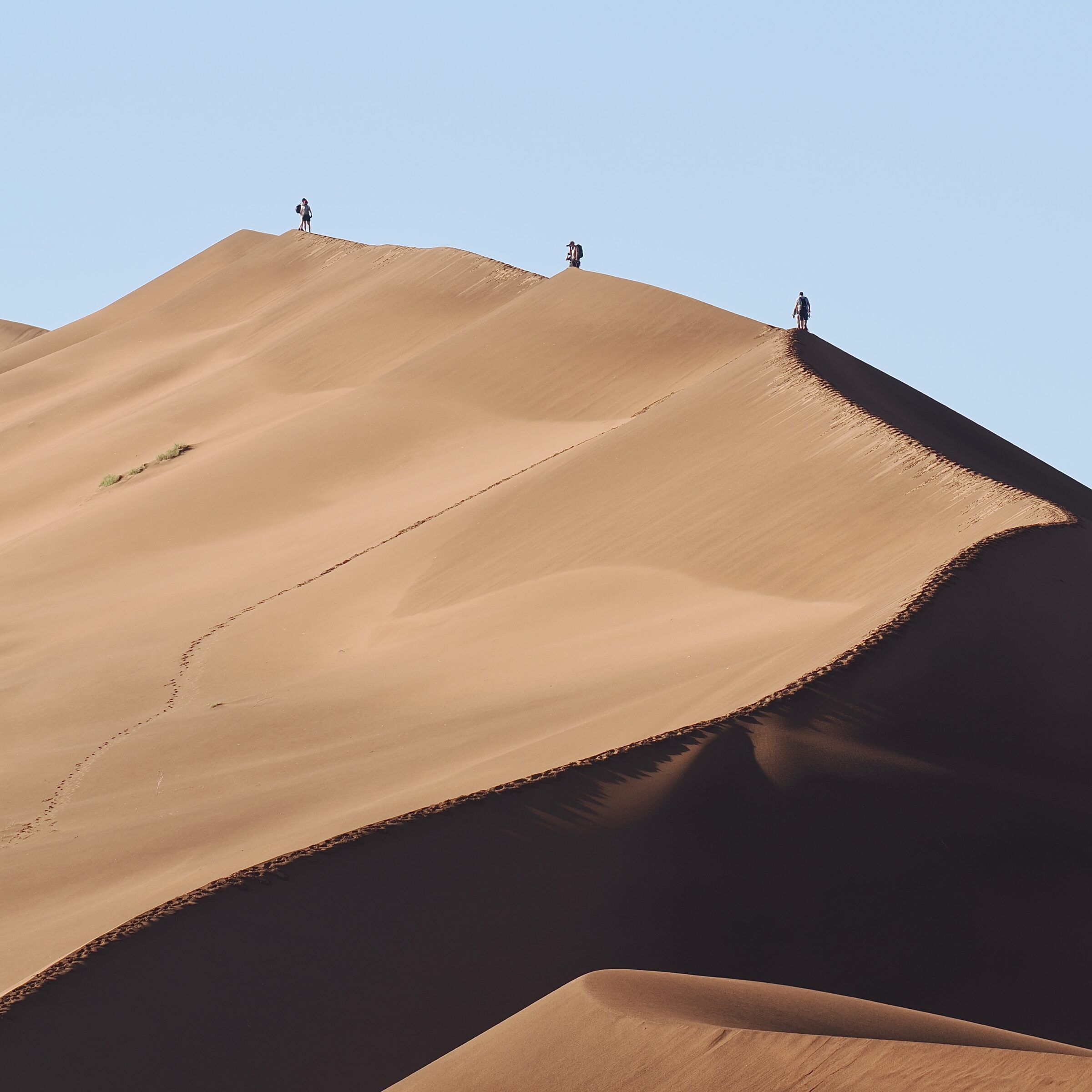
Every morning the Namib’s most-climbed dune is “embroidered” by human feet.
A wider-angle view, nearby, may “enlarge” footprints in the foreground, but at the very same time it shows how very tiny are full-sized humans in such a spacious landscape.
You may need to zoom in/enlarge the image to notice that four adult humans are present!
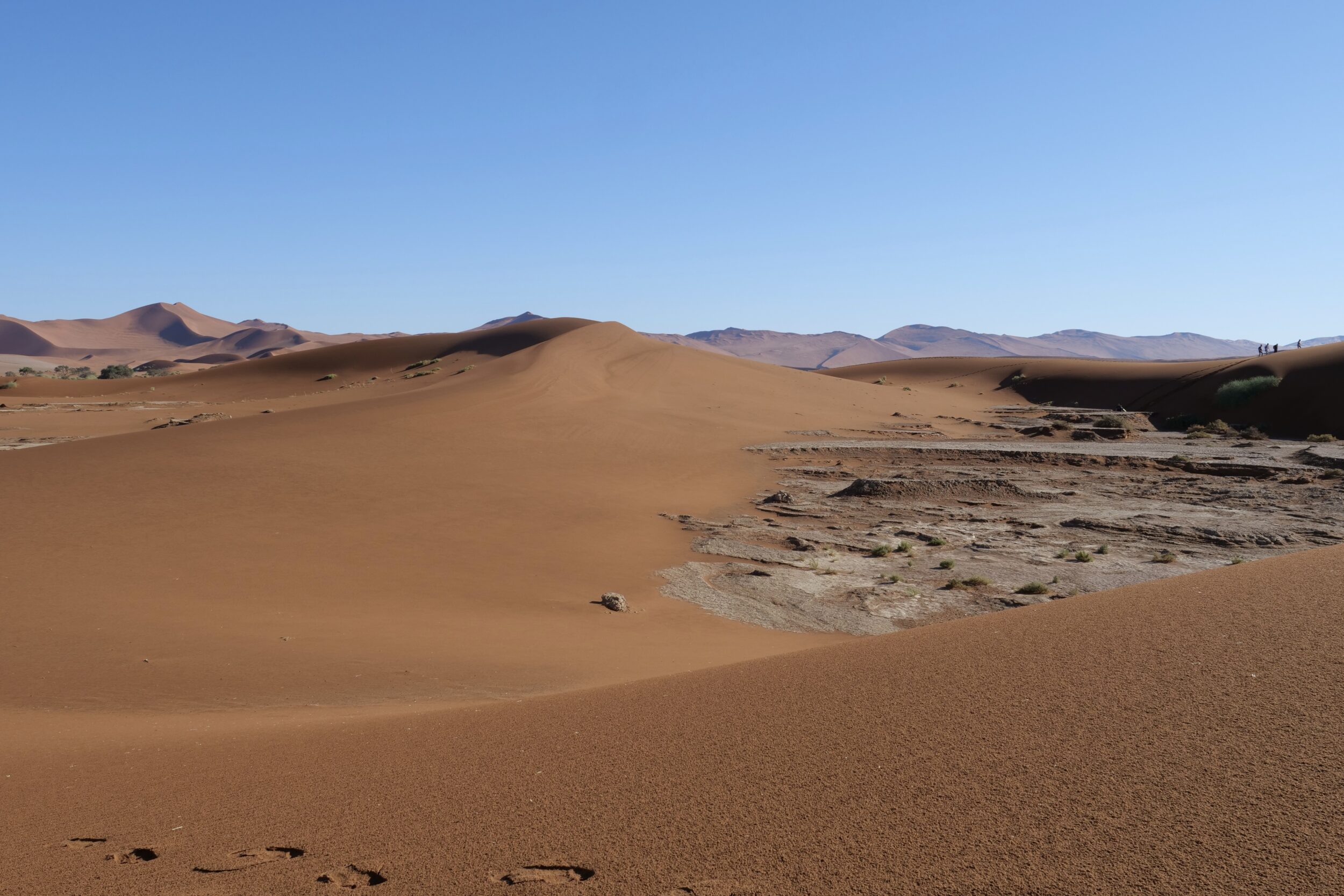
Footnote:
This post has featured actual footprints, but metaphorical “footprints” are evident almost everywhere you care to look – marks, scars, indentations, deposits, stains, debris, and “unlikely” shapes which tell any keen observer what has been going on in a particular landscape, over the last several hours/days/months/years/millennia/ thousands of million years.
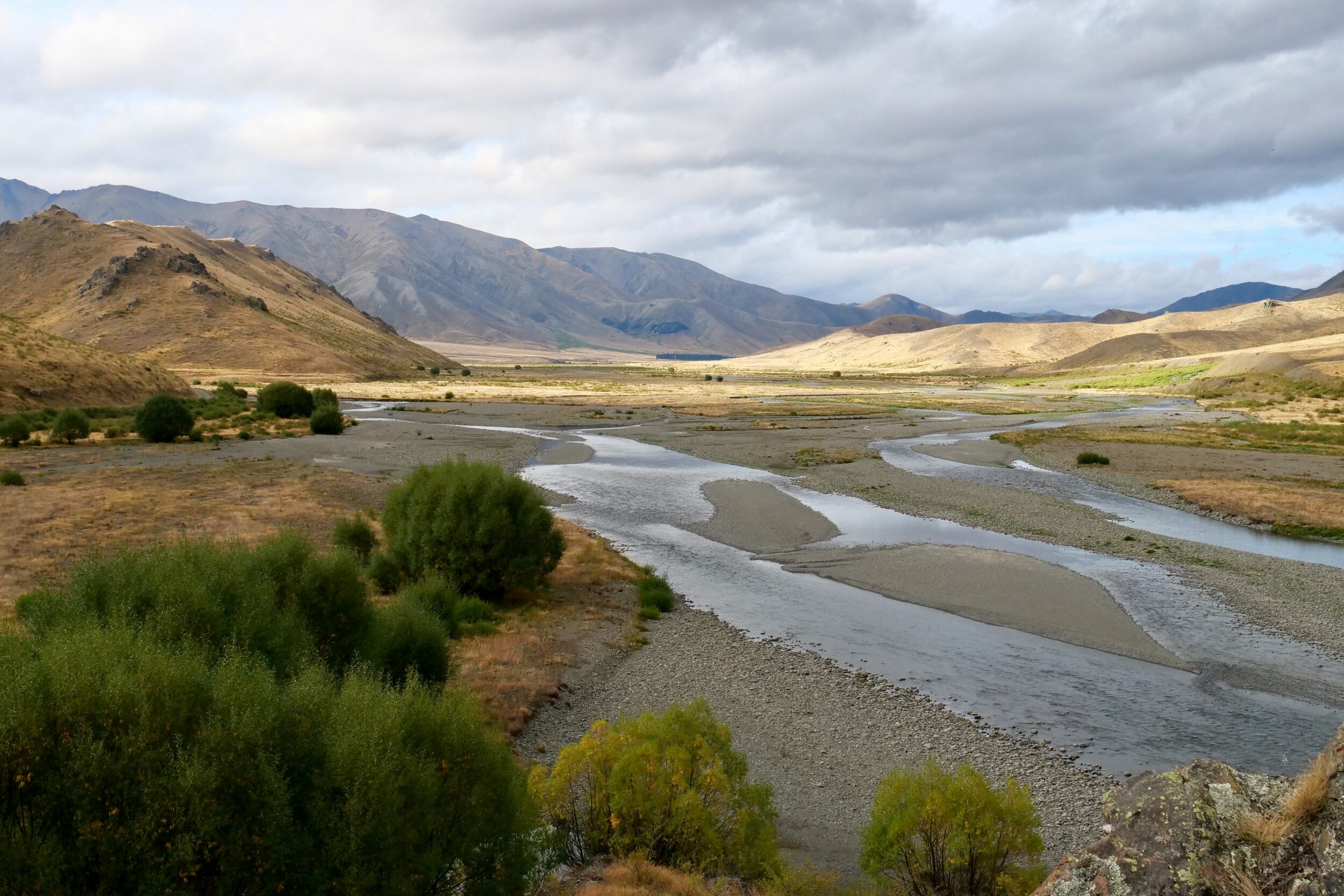
Molesworth Recreation Reserve covers 180,787 hectares of high country, north of Hanmer Springs; it combines conservation, tourism, and New Zealand’s largest farm.
Click here to see why you ought devote at least the greater part of a day to Acheron Road – 2WD, with care, but definitely not for caravans – and to discover how to “read” the above image.
Musical bonus
One could describe Wayne Shorter as “jazz’s J.S. Bach”; each is/was a nigh-peerless combination of meticulous composer (of pieces at once “perfect, as written”, and great springboards for improvisation), virtuoso instrumentalist, and improvisatory genius.
A number of Shorter’s compositions are “standards”, tackled by just about every other improvising jazz player.
He first recorded Footprints in February 1966; a performance which surfaced in October 1966 on Shorter’s LP Adam’s Apple, shortly after the release of a (Shorter-included) Miles Davis sextet version.
In July 2001 – just shy of his 68th birthday, in concert – Shorter delivered this quite different, very playful elaboration:
Issued in 2002, the relevant album – footprints live! – was the debut from Shorter’s “footprints quartet”, with bassist John Patitucci, drummer Brian Blade and pianist Danilo Perez.
Pelican Yoga’s next destination: the Windhoek Country Club!
